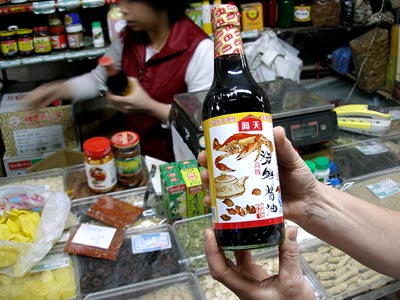
Japanese soya sauce naturally brewed from soya beans and wheat. Dark soya sauce, koikuchi-shoyu, is the most commonly used in Japan for general cooking purposes and is served as a condiment at every meal. Alternatively, light-coloured soya sauce, usukuchi-shoyu, can be used to avoid colouring food. It is a little saltier than koikuchi-shoyu and lacks its complexity of aroma and flavour. Tamati-joyu is heavier, darker and richer than koikuchi-shoyu and is sometimes used as a dip.
Japanese mustard. This is a very pungent mustard, similar to English mustard, and is made from the seeds of the black rape plant. It is used in dressings. It also is served with noodle and nabe (a variety of communal one-pot meals) dishes. Like English mustard, it is available as a powder for mixing.
Hugely expensive meat from cows that have speciality diets and are massaged to help disperse the fat throughout the muscle. Calves suckle for 12 months and then graze grass and are then fed a diet of maize and hay. They have the odd tot of beer. They have black coats and are now bred in the United Kingdom, North America and Australia. The resulting meat is succulent, tasty and memorable.

A type of bright green seaweed used to make soups and to colour various dishes. To cook, first soak a small piece in luke warm water for 10 minutes or so, The ribs can be discarded and the remaining fronds chopped. It should be added to to soups and stews towards the end of the cooking process to retain the flavour. It may also be baked dry and mixed with roasted sesame seeds to make a condiment.